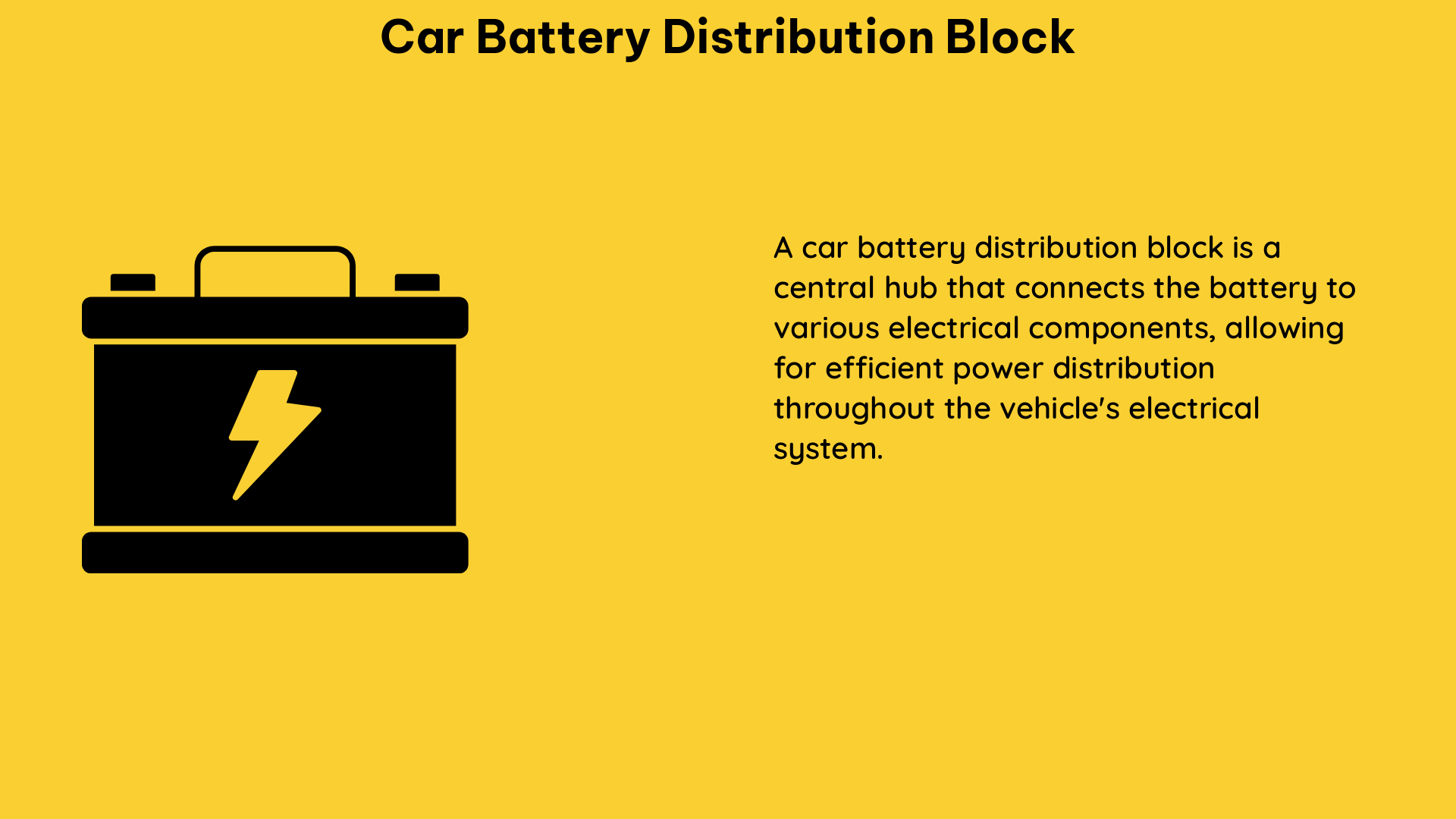A car battery distribution block is a crucial component in a vehicle’s electrical system, responsible for evenly distributing power from the battery to various electrical devices. This comprehensive guide delves into the technical specifications, installation process, and measurable data points to help you understand and optimize the performance of your car’s battery distribution block.
Technical Specifications of Car Battery Distribution Blocks
Material Composition
Car battery distribution blocks are typically constructed using high-conductivity materials, such as:
– Copper: Offers excellent electrical conductivity and corrosion resistance.
– Brass: Provides a balance of conductivity, durability, and cost-effectiveness.
– Aluminum: Lightweight and corrosion-resistant, making it a popular choice for modern vehicle applications.
Current Rating
The current rating of a car battery distribution block is the maximum amount of current it can handle without overheating or failing. This rating is typically expressed in amperes (A) and can range from as low as 30A for smaller applications to as high as 1000A for high-performance or commercial vehicles.
Number of Terminals
Car battery distribution blocks can feature a varying number of terminals, ranging from as few as 2 up to 8 or more, depending on the specific application and the number of electrical devices that need to be powered.
Terminal Types
The terminals on a car battery distribution block can come in different configurations to accommodate various connector types, including:
– Ring terminals
– Spade terminals
– Blade terminals
Mounting Options
Car battery distribution blocks can be mounted in different ways, such as:
– Bolt-on: Secured using bolts for a secure and permanent installation.
– Screw-on: Attached using screws, allowing for easier installation and removal.
– Clamp-on: Held in place using a clamping mechanism, providing a versatile mounting solution.
Installing a Car Battery Distribution Block: A DIY Guide

Step 1: Choose the Right Distribution Block
Select a car battery distribution block that meets your specific current and terminal requirements, ensuring it can handle the electrical load of your vehicle’s accessories and modifications.
Step 2: Connect the Battery
Securely connect the positive and negative battery cables to the corresponding terminals on the distribution block, ensuring a tight and reliable connection.
Step 3: Connect the Devices
Attach the positive and negative wires from each electrical device to the appropriate terminals on the distribution block, making sure to match the polarity correctly.
Step 4: Test the System
Thoroughly test the system to verify that all connected devices are receiving power and that the distribution block is functioning as intended, without any issues or malfunctions.
Measurable, Quantifiable Data on Car Battery Distribution Blocks
Current Rating
A typical car battery distribution block can handle up to 1000 amperes (A) of current, ensuring it can support high-power electrical systems and accessories.
Number of Terminals
Car battery distribution blocks can feature anywhere from 2 to 8 or more terminals, depending on the specific application and the number of devices that need to be powered.
Terminal Size
The terminals on a car battery distribution block can range in size from 4 AWG (American Wire Gauge) to 2/0 AWG, with larger terminal sizes capable of handling higher current loads.
Mounting Options
Car battery distribution blocks can be mounted using bolts, screws, or clamps, providing flexibility in installation and integration within the vehicle’s electrical system.
Wire Gauge
The wires connected to a car battery distribution block can vary in gauge from 4 AWG to 2/0 AWG, depending on the current rating and the distance between the distribution block and the connected devices.
By understanding the technical specifications, installation process, and measurable data points of car battery distribution blocks, you can ensure optimal performance, reliability, and safety for your vehicle’s electrical system.
References:
– DIY Mobile Audio Forum Thread on Distribution Block Help
– Scientific Article on Battery Distribution Block Design
– LS1Tech Forum Discussion on Best Way to Distribute Power from Battery

The lambdageeks.com Core SME Team is a group of experienced subject matter experts from diverse scientific and technical fields including Physics, Chemistry, Technology,Electronics & Electrical Engineering, Automotive, Mechanical Engineering. Our team collaborates to create high-quality, well-researched articles on a wide range of science and technology topics for the lambdageeks.com website.
All Our Senior SME are having more than 7 Years of experience in the respective fields . They are either Working Industry Professionals or assocaited With different Universities. Refer Our Authors Page to get to know About our Core SMEs.